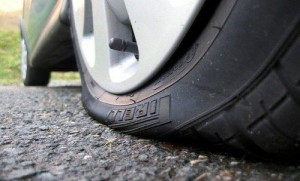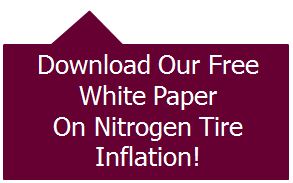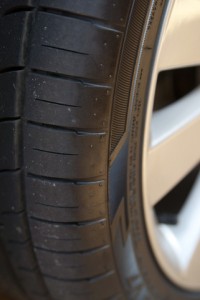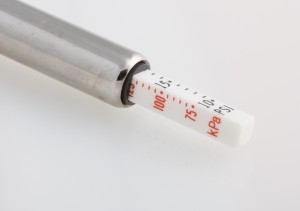 This is a guest post from Andre Smith.
This is a guest post from Andre Smith.
Nitrogen inflation has become increasingly popular in the last ten years. Many industry experts praise it for its promise of increased fuel economy and reduced tire wear, while others raise questions about the actual usefulness and credibility. With fuel prices as high as ever and many consumers and businesses cutting back on costs, nitrogen inflation can seem like an enticing endeavor. While nitrogen inflation can in fact promote efficiency, it is important to have all the correct information on why it is beneficial.
Common Myths About Nitrogen Inflation
There is no need to do pressure checks on tires inflated with nitrogen.
False. While nitrogen does in fact take longer to leak out of inflated tires, tires inflated with nitrogen should still be checked regularly for proper pressure. Divers should notice that their pressure checks come back positive more often than using regular air and the amount of pressure maintenance that needs to be done will most likely be reduced. Nitrogen, however, is still prone to malfunctions in the actual tires such as leaks in the valve stem or a punctures.
Nitrogen inflation can increase fuel economy and tire life.
Because nitrogen inflation promotes properly pressurized tires by eliminating the leaky oxygen in air, nitrogen inflation can in fact promote better fuel economy and more even tire wear. These factors, however are associated directly with the proper tire pressure regardless of composition. Nitrogen inflation provides a more convenient way to keep the pressure ideal.
There is no benefit to inflating with nitrogen as air is already 78.1% nitrogen.
Air is in fact already 78.1% nitrogen. During actual nitrogen inflation, however, the current air in the tire is removed and replaced with clean nitrogen at a concentration of 94% or more. This purging of air also removes any water vapor, oil contaminants, and particles that may be in the tire. The higher concentration of nitrogen is what promotes a slower deflating tire not the nitrogen itself.
Nitrogen Inflation Research
The idea of nitrogen inflation dates back to as early as 1968 when a man by the name of Dr. Larry Sperberg came up with the concept of “chemical degradation,” where a tire wears from the inside out. He found that air from compressor tanks was introducing the tires to air that was full of moisture. According to Sperberg the moisturized air makes its way into the tire cord body and causes heat and expansion. By using nitrogen that is dry and clean this expansion and degradation is decreased significantly.
Nitrogen’s advantage over oxygen when used as a way to inflate tires lies within its chemical structure. Nitrogen molecules are larger than oxygen molecules. As a result, nitrogen does not pass through the inner liner or sidewalls of a tire as easily. In addition, nitrogen is dry and inert. This allows tires to run cooler and reduces degradation.
Additional Benefits of Nitrogen Inflation
Being green has never been more important. In addition to investing in a fuel efficient or hybrid vehicle, inflating with nitrogen can make that vehicle even greener. Nitrogen inflation promotes better fuel economy and can reduce tire wear. By decreasing these you are keeping more emissions out of the air and more tires out of landfills. More information on automobiles being green can be had at Klosters’ website.
How Do I Use Nitrogen On My Vehicle?
There are a few ways to have your tires inflated with nitrogen. Nitrogen inflation requires a special system in order for the current air in the tire to be purged and then refilled with a high concentration of nitrogen. Many automotive dealers will provide this service. There are also kits available for purchase that allow for you to have access to nitrogen inflation at anytime.
In Conclusion
While nitrogen inflation is not a “cure all,” solution for pressurized automotive tires, it does provide some worthy advantages. Because of it’s chemical structure, nitrogen is scientifically more capable of providing longer lasting pressure directly resulting in better fuel economy and tire life. As this becomes a rising concern, implementation of nitrogen in automotive tires will most likely continue to rise.








